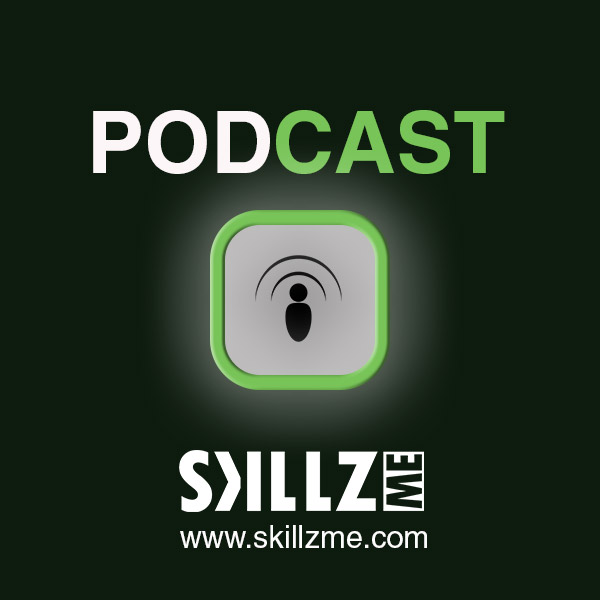

Social Media Marketing (SMM) involves creating and sharing organic content to engage audiences, while Social Media Advertising uses paid ads to promote content and target specific users, both aiming to increase brand awareness and drive conversions over social channels.
Social Media Marketing is all about being active across various social networks and creating an environment where people are drawn to your content and want to learn more.
Most Popular Social Media Platforms for Marketing
YouTube
YouTube is a powerful marketing platform because of its massive audience, with over 2 billion monthly users, and its focus on engaging video content. Brands can use videos to tell stories, demonstrate products, and run targeted ads based on demographics, interests, and behaviors.
YouTube’s SEO benefits help boost visibility, as optimized videos can appear in Google search results.
Influencer marketing on the platform also allows brands to leverage trusted creators for deeper audience connection. Plus, YouTube offers monetization options and detailed analytics to measure and optimize campaign success.
LinkedIn is a valuable marketing platform due to its professional network, which connects over 900 million members globally. It’s ideal for B2B marketing, offering businesses the ability to target decision-makers and professionals through sponsored content, LinkedIn Ads, and organic posts. The platform’s focus on career development and industry discussions allows brands to build authority, share thought leadership, and foster professional relationships. LinkedIn also provides robust analytics and insights, helping marketers refine strategies and connect with the right audience for lead generation and brand awareness.
Facebook is a powerful marketing platform because of its massive user base, which includes over 2.9 billion active users worldwide. It allows businesses to target specific demographics, interests, behaviors, and locations through highly customizable ads, making it a versatile tool for both B2C and B2B marketing. Facebook also offers various formats for engaging content, such as images, videos, and live streams.
With its built-in tools for tracking performance, businesses can analyze and optimize campaigns in real-time. Additionally, Facebook’s community features, like Groups and Messenger, foster direct interaction between brands and customers, enhancing customer relationships and engagement.
Instagram is a powerful marketing platform because of its highly visual nature, which makes it ideal for showcasing products and services. With over a billion active users, it offers businesses the opportunity to connect with a vast audience, especially younger demographics who are highly engaged. Instagram provides various ad formats, such as Stories, carousel ads, and sponsored posts, allowing brands to creatively engage users.
Additionally, features like hashtags, influencers, and shoppable posts help brands reach targeted audiences, boost brand visibility, and drive sales. The platform’s ability to foster community and engagement through likes, comments, and direct messaging also helps businesses build stronger relationships with customers.
Snapchat
Snapchat is a unique marketing platform because of its younger, highly engaged user base, particularly teens and young adults. It offers an ephemeral nature, with content disappearing after being viewed, creating a sense of urgency and exclusivity that brands can leverage. Snapchat’s creative features like filters, lenses, and interactive ads allow brands to engage users in fun and innovative ways.
With its geo-filters and location-based features, brands can target specific demographics and areas, driving foot traffic or promoting local events.
Snapchat also provides a seamless and interactive experience through its Stories, Discover, and sponsored content, making it a powerful tool for companies to reach a wider audience and build brand awareness.
TikTok
TikTok is a powerful marketing platform because of its massive and highly engaged user base, particularly among Gen Z and millennials. The platform thrives on short-form, creative videos, which makes it perfect for viral content and brand storytelling. TikTok’s algorithm promotes organic reach, allowing even small brands to go viral if their content resonates with users.
The app also offers various interactive features, like challenges, hashtags, and user-generated content, which brands can use to encourage participation and community-building. TikTok’s ad offerings, including in-feed ads, branded effects, and sponsored hashtags, allow for highly targeted and engaging advertising that feels native to the platform, making it an effective way for brands to connect with younger audiences.
X (formerly Twitter)
X is a strong marketing platform due to its real-time nature, allowing brands to engage with audiences instantly and stay relevant in ongoing conversations. The platform is ideal for sharing updates, and news, and engaging in trending topics through hashtags, making it a great tool for building brand awareness and sparking conversations. Its ability to quickly go viral through retweets and replies offers businesses the potential for significant organic reach.
X also offers targeted advertising options, including promoted tweets and trends, which enable brands to reach specific demographics. Additionally, X’s concise format encourages quick, impactful messaging, perfect for conveying key brand messages and promotions.
Types of Social Media Advertising
- Organic advertising refers to the free promotion you gain from posting on your social media platforms, writing blog posts, and sharing photos or videos. To make the most of organic social media marketing, it’s important to stay active and engage with your audience regularly.
- Paid advertising allows you to pay to promote your content on social media platforms. Depending on the site, you may be charged per post or a monthly fee for ongoing promotion. This helps boost your content’s reach and visibility.
- Sponsored content involves partnering with companies or brands to promote their products or services. You can offer your services as a spokesperson or create sponsored posts on your social media to reach a wider audience and earn compensation.
Getting Started With Your Social Media Strategy
- Create Engaging Content
Posting relevant and original content is key to attracting and keeping followers. People appreciate fresh and interesting posts, and if you consistently share content that resonates with your audience, they’re more likely to return.
Keep things varied to maintain interest and avoid repetition, ensuring your followers stay engaged and excited for your next post.
- Use Paid Ads for Targeted Promotion
To reach specific audiences, consider using paid ads on social media. This allows you to target particular individuals or groups and place your content directly in their feeds.
While it requires a budget, paid advertising is an effective way to increase visibility and ensure your content reaches the right people.
- Promote Content with Sponsorships
Another effective way to promote your content is by partnering with companies or brands for sponsorships. By reaching out to brands that align with your audience, you can secure sponsored posts and get your content featured on their platform.
This allows you to increase exposure without directly paying for advertising, and it builds valuable brand partnerships.
- Engage with People Talking About Your Product or Service
When people mention your product or service on social media, make sure to engage with them! Respond to their comments, thank them for their support, and address any questions or concerns they may have.
Building a positive, interactive relationship with your audience helps strengthen loyalty and trust. People are more likely to make purchases and advocate for brands they feel connected to.
- Grow a Following
A large social media following is valuable because it gives you a broad audience to engage with and advertise to. To grow your following, you can reach out to people in your industry, invite them to follow you, create a dedicated page or profile related to your product or service, or simply focus on producing high-quality content that attracts organic followers.
The key is to stay consistent and engage with your audience to build a loyal community.
The infographic from Social Insights below summarizes it all. For many years people and companies have been racing to catch attention and capture more followers. The marketing industry created new jobs over the last years like influencers, digital normades, or simple content creators.


![The Most Visited Websites in the World, by Category [Infographic] The Most Visited Websites in the World, by Category](https://www.skillzme.com/wp-content/uploads/2025/02/hero-imageThe-Most-Visited-Websites-in-the-World-by-Category-200x200.jpg)
![The Next Characters to Enter the Public Domain [Infographic] The Next Characters to Enter the Public Domain [Infographic]](https://www.skillzme.com/wp-content/uploads/2025/02/hero-image-Enter-Public-Domain-200x200.jpg)
![Marine Litter [Infographic] hero-image-marine-litter-infographic](https://www.skillzme.com/wp-content/uploads/2024/11/hero-image-marine-litter-infographic-200x200.jpg)


Recent Comments